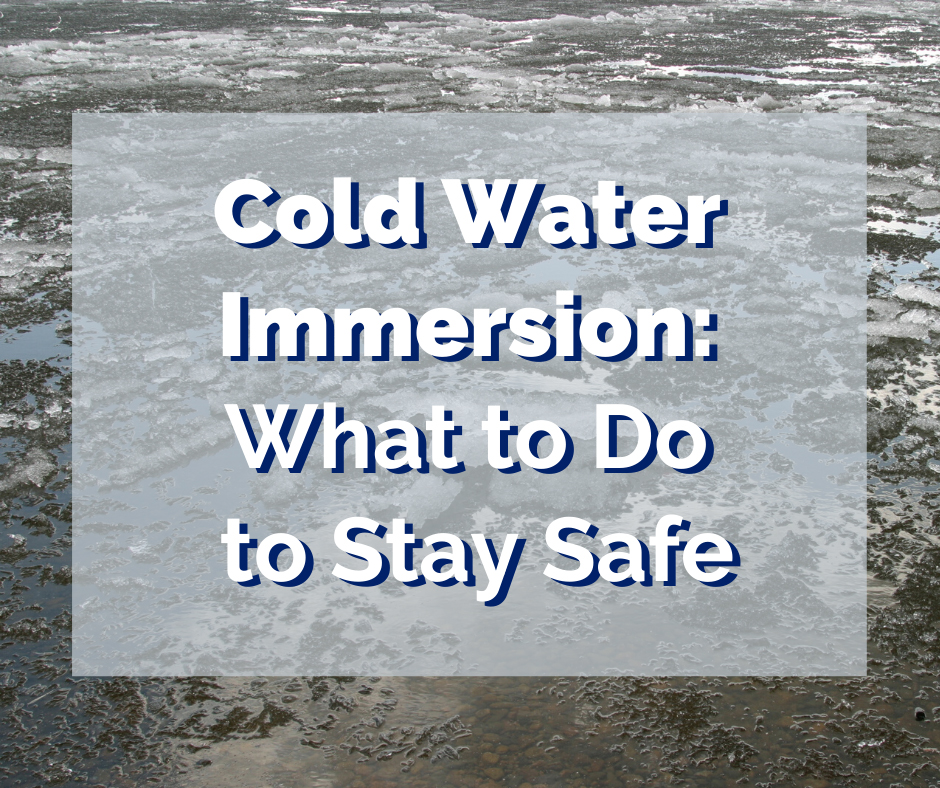
These first few months of the year typically bring chilly water temperatures. If you head out on your boat, make sure you understand what to do if you suddenly encounter cold water. It’s vital to your safety — cold water immersion is life-threatening, immediately, unless you happen to be wearing some kind of thermal protection.
Cold Shock
Cold water immersion is so dangerous because the cold shock that occurs as soon as the water meets your skin. This cold shock removes the ability to control your breathing, which means that even if you know how to swim, and even if the water is calm, your uncoordinated, uncontrollable breathing puts you at high risk of drowning.
Cold shock lasts for about five minutes but unless you know how to get a handle on your breathing, those problems may keep occurring. And, after those first five minutes, you’re at further risk of physical incapacitation, as your limbs become useless against the cold. All of this happens long before hypothermia sets in.
So, what can you do? Preparedness is the first step, followed by drilling yourself on cold water safety actions so if your preparations fail, you aren’t caught by surprise.
1. Use Protective Gear
A personal flotation device keeps you bobbing during that initial cold shock, where you’re likely losing control of your breathing. With a PFD on, your mouth is not submerged, so any gasping brings you air, not lungs full of icy water. And, that PFD also does its job of keeping you afloat even when you run out of energy to swim or tread.
All of this helps reduce the chance of drowning, and may provide a small amount of insulation.
If you know for sure that you are heading out in cold water temperatures, invest in a wet suit, dry suit, immersion suit, survival suit, or similar thermal gear. Note that this equipment is used based on water temperature, not air temperature. It’s more expensive than the average PFD, but well worth the safety if you cannot stay off the water until warmer conditions.
Finally, outfit your boat with re-entry means, like a ladder or sling.
2. Carry a Beacon and Share Your Plan
If travelling offshore, an emergency position indicating radio beacon, or EPIRB, is crucial in life or death situations. A float plan is also a critical tool, and it doesn’t cost a cent. Write down the details of your trip, your boat, your passengers, and your emergency contacts, and give it to a trusted individual who will use it if you seem to be in trouble.
3. Stay Calm and Consider the Options
Let’s say you’re in cold water. Now, every decision you make is critical to survival. Try to stay calm and control your breathing, which is much easier when you’re wearing safety gear. Try to use your surroundings to get out of the water, or to keep as much of your body out of the water as possible.
Unless you are very close to shore, swimming to safety is unlikely. If it’s not doable, focus on minimizing heat loss. Assume the Heat Escape Lessening Position (HELP) position. If you’re in a group, huddle together. Send out any emergency communications or signals possible.
Planning ahead and being prepared is the best way to ensure your fun on the water doesn’t turn into tragedy. Learn more about cold water immersion through the Canadian Safe Boating Council.
